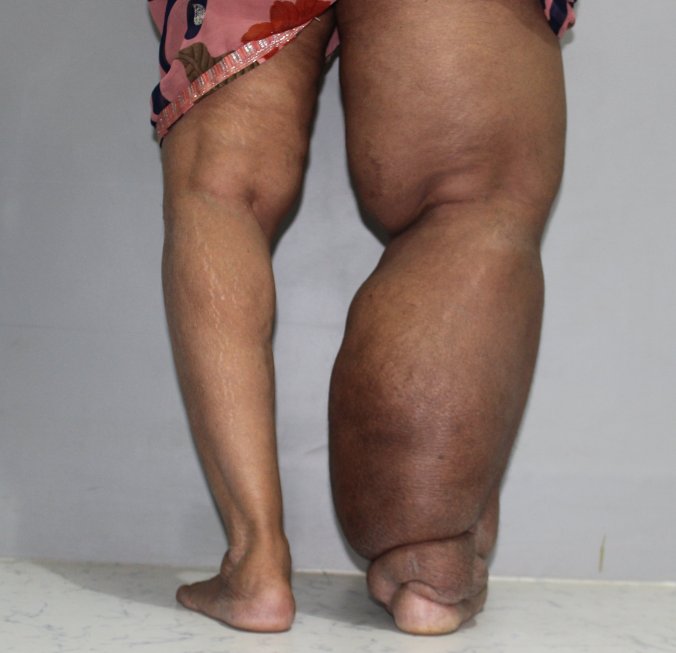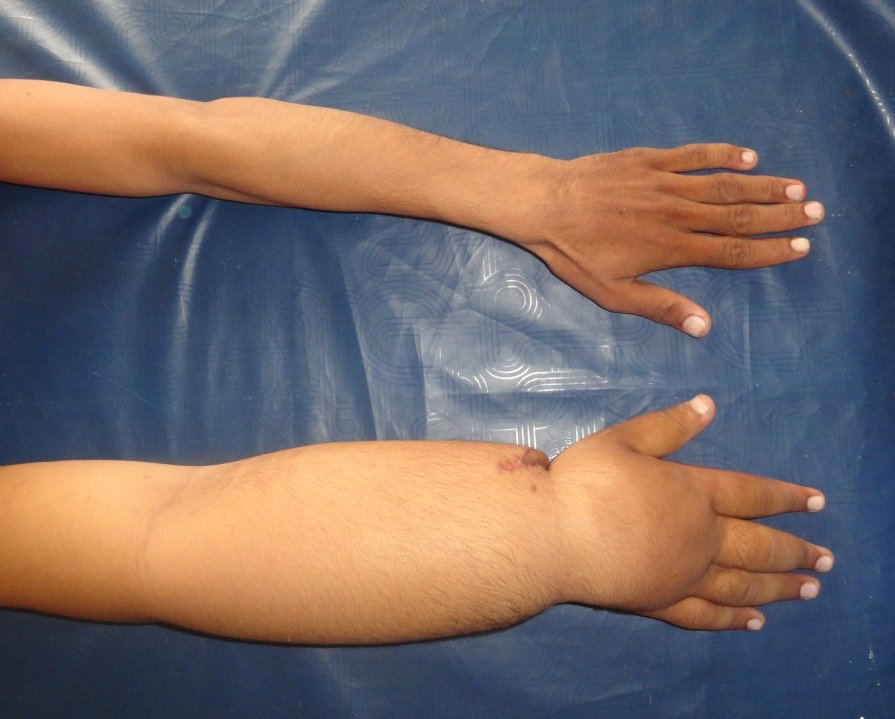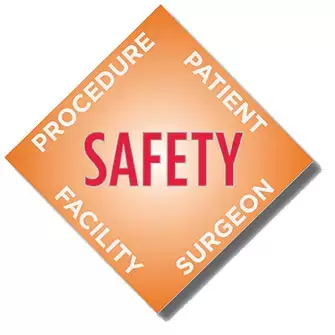Lymphedema
Lymph is made of protein-rich fluid that travels from the tissues of the body to the veins. It travels through lymphatic vessels and lymph nodes before it reaches the veins of the body. Any obstruction to this movement can result in the accumulation of the protein-rich fluid in the tissues. this swelling is referred to as lymphedema. In the absence of relief from this obstruction, lymphedema can become progressive. It can lead to a worsening of the swelling with time. This can lead to permanent changes with significant morbidity in the affected individual.
What are the areas affected by lymphedema?
Lymphedema commonly affects the extremities and genitalia. It can also affect other parts like the torso, abdomen, and back. The involvement is usually asymmetric.
What are the common reasons for lymphedema?
There can be various reasons for longstanding lymphedema. These include,
What are the changes that are seen as a result of lymphedema?
Lymphedema is usually a progressive condition if left unattended. Many of the changes seen in lymphedema take time to manifest. The changes include the following:
What are the investigations specific to the diagnosis of this condition?
It is often possible to diagnose this condition based on the clinical examination findings. Lymphoscintigraphy is a definitive investigation that shows the extent and level of lymphatic obstruction. MRI can help assess the pathology in advanced cases.
What are the treatment modalities that are helpful in lymphedema?
The treatment modalities include non-surgical and surgical treatments.
Non-surgical. This is the mainstay of the management of lymphedema. It helps slow down the progress of lymphedema. This in turn helps reduce the incidence of complications. These include,
Surgical treatments. These are carried out in a subset of patients. In the majority of patients, non-surgical treatments are usually adequate. Surgical treatment may be indicated in individuals with complications and inadequate response to non-surgical treatments. Surgical treatments are not carried out without conservative treatments like lymphatic massage and pressure garments. Some of the surgical treatments include,
Why treat lymphedema?
Lymphedema can result in considerable morbidity in those affected. Treatments help in reducing the morbidity and significantly improve the quality of life. Neglecting lymphedema can lead to a rapid worsening of this condition with its attendant complications and sequela.
What are the areas affected by lymphedema?
Lymphedema commonly affects the extremities and genitalia. It can also affect other parts like the torso, abdomen, and back. The involvement is usually asymmetric.
What are the common reasons for lymphedema?
There can be various reasons for longstanding lymphedema. These include,
- Filarial infection. These are very common in the developing world. Lymphedema occurs due to the presence of adult worms in the lymph nodes. The presence of these worms leads to obstruction and recurring inflammation of the tissues. The areas affected due to filarial infection are the lower limbs and genitalia.
- Cancer surgery. Surgical treatment of cancer may require the removal of draining lymph nodes of the cancer-affected region. This leads to lymphedema of the tissues which drain into the lymphedema. For example, treatment of breast cancer can result in swelling of the upper limb of the treated side due to the obstruction of the lymphatic fluid in the axilla (armpit).
- Radiotherapy. Radiotherapy is commonly given in the management of cancers. This can result in lymphedema secondary to the changes in the tissues.
- Metastasis from cancer. Spread of cancer cells into the draining lymph nodes can result in obstruction of the lymphatic flow. For example, obstruction of the flow of the lymphatic vessels of the groin from cancer of the genitalia can lead to lymphedema of the lower limbs.
- Trauma. Circumferential loss of tissues, especially of the limbs can result in a disruption of the lymphatic flow and swelling distal to the obstruction.
- Developmental. Abnormalities in lymphatic development can result in lymphedema. These individuals can present with lymphedema in childhood or adolescence.
What are the changes that are seen as a result of lymphedema?
Lymphedema is usually a progressive condition if left unattended. Many of the changes seen in lymphedema take time to manifest. The changes include the following:
- Swelling. In the early stages, the swelling is mild and reversible with elevation and compression. As the condition progresses the swelling becomes severe and irreversible.
- Deformity. The deformity is a result of the swelling, and changes in the skin of the affected part. This affects the emotional well-being of the affected individual.
- Lymphangitis. This is due to secondary bacterial infection of the lymphatic vessels of the affected part. Patients present with fever, malaise, and redness of the skin with red streaks. It can progress to cellulitis, generalized infection, and septicemia. Septicemia is a serious condition and requires inpatient treatment. It can pose a threat to life.
- Skin thickening. The affected part of the skin undergoes thickening. The skin can have papules (elevations), deep folds, and intertrigo.
- Ulceration and lymphorrhoea. These are seen in advanced cases. Lymphorrhoea is seen in cases of secondary bacterial infection. It usually requires treatment of the underlying infection. Ulceration can be difficult to treat. These are resistant to the conventional treatment of non-healing ulcers.
- Muscle wasting. This is secondary to disuse atrophy of the affected part. This leads to problems with mobility and in severe cases, the patient becomes bedridden. Problems with mobility can have consequences for the financial independence of the individual and are closely related to mental well-being.
- Soft tissue hypertrophy. Lymphedema can result in hypertrophy of the soft tissues like fat (adipose tissue) of the affected part. This is thought to be secondary to long-standing inflammation.
- Rarely it can lead to secondary malignancy of the affected part.
What are the investigations specific to the diagnosis of this condition?
It is often possible to diagnose this condition based on the clinical examination findings. Lymphoscintigraphy is a definitive investigation that shows the extent and level of lymphatic obstruction. MRI can help assess the pathology in advanced cases.
What are the treatment modalities that are helpful in lymphedema?
The treatment modalities include non-surgical and surgical treatments.
Non-surgical. This is the mainstay of the management of lymphedema. It helps slow down the progress of lymphedema. This in turn helps reduce the incidence of complications. These include,
- Lymphatic massage. This is known as manual lymphatic drainage (MLD). The lymphatic drainage is increased with the help of existing lymphatics present under the skin. MLD uses gentle techniques with gentle strokes of the skin. For lymphatic massage to be effective, it has to be carried out regularly and frequently. MLD is usually done by a trained therapist. Lymphatic massage can also be administered in the home setting by a caregiver.
- Pressure garment. The use of pressure garments helps reduce the reaccumulation of the swelling. They should be used continuously for the maximum benefit. The use of pressure garments can be combined with the use of compression bandaging. Compliance is usually a problem with the use of pressure garments in hot and humid climates.
- Foot hygiene. This is important in cases of lymphedema of the lower limbs. The foot is usually the ingress for bacterial infection. Foot hygiene and early management of fissures and intertrigo can lessen the incidence of bacterial infections. Individuals with lymphedema of the lower limbs should have a habit of daily foot inspection. Any fissure or intertrigo should be managed expediently. Similar observations apply to hand care in those with lymphedema of the upper limb.
- Early management of lymphangitis. Lymphangitis is due to bacterial infections. They require antibiotics. Recurring episodes of lymphangitis lead to further obstruction of the lymphatic channels due to secondary scarring and worsening of lymphedema.
Surgical treatments. These are carried out in a subset of patients. In the majority of patients, non-surgical treatments are usually adequate. Surgical treatment may be indicated in individuals with complications and inadequate response to non-surgical treatments. Surgical treatments are not carried out without conservative treatments like lymphatic massage and pressure garments. Some of the surgical treatments include,
- Debulking procedures. This is done to address folds of skin and soft tissue. The skin and soft tissues over the fascia are removed and the wounds are closed. A skin graft may help with the closure in advanced cases.
- Liposuction. This is carried out to address the lipodystrophy (fat enlargement) seen in individuals with lymphedema.
- Microsurgery. Lymphovenous anastomosis (LVA) and vascularised lymph node transfer (VLNT) are surgical procedures carried out with the help of a surgical microscope. LVAs are preferred in the early stages of lymphedema whereas VLNTs are done in more advanced cases of lymphedema.
Why treat lymphedema?
Lymphedema can result in considerable morbidity in those affected. Treatments help in reducing the morbidity and significantly improve the quality of life. Neglecting lymphedema can lead to a rapid worsening of this condition with its attendant complications and sequela.





